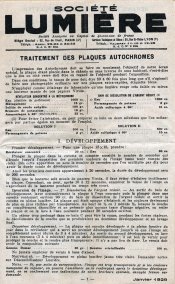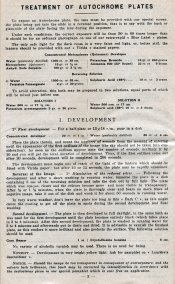A Modern Autochrome
I had posted this idea on an older thread about Autochromes, but a friendly member directed me to this more recent thread.
I have an idea that I'd really like some feedback on... I've concocted a method to (fairly) easily make a modern autochrome-esque, additive color photograph.
My method would eliminate the need to devise a complicated and archaic potato-starch reseau. However, I'm sure a lot of you autochromistes' main interest lies in creating this reseau the old fashioned way, so my method might not interest you. But for those who would just like to have a unique color photograph using additive color, this might excite you as it has me.
So, to produce a reseau by the simplest means possible, just take a picture of a white TV screen with slide film. That's it! You've got a RGB screen w/ built in lampblack, and the ability to tweak the balance by affecting tint, contrast, brightness, etc, using nothing more than the controls on your old CRT television. It would be interesting to find the optimum magnification, the optimum exposure, and so forth, but it's something that anybody could do. You just send it away for processing like normal.
So now you've got a RGB screen. Next, just *simply* attach some equally sized black and white film to the reseau, expose, reverse process, and boom, you've got a modern autochrome.
*Simply* though, I think not. The trick is in this part, and it's where my knowledge and experience breaks down. But basically, you'd need to adhere the reseau and b&w film together so that you could process the b&w & not harm the slide film.
To make the b&w emulsion accessible and w/o the need to de-register the sheets, I'm thinking to soak off the anti-halation layer and epoxy it to the slide reseau with the emulsion facing towards the open, not sandwiched inside where no chemicals could penetrate. So you'd be exposing through the reseau and base of the film.
I'm guessing that processing of the b&w would seriously harm the slide film if not protected (tell me if I'm wrong). So you'd have to coat the slide reseau with a clear epoxy, coat the edges to make sure no chemicals got inbetween the sheets, and then carryout the reversal processing.
Now.... I don't know the first thing about (a) removing the AH backing, (b) appropriate adhesives/epoxies, or (c) reversal processing. I just know that these things are possible, and I'd love to hear what people have to say regarding the feasibility of all this.
Thanks!
Chris Holmquist
holmburgers







